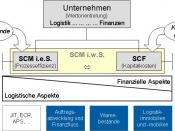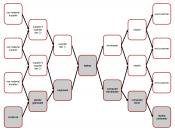Introduction
The impact of the Internet is transforming businesses and fundamentally changing the ways businesses operate. Many of the business practices and structures that historically defined an industry and its profitability are now being dramatically altered from moving brick and mortar toward online without space and time constraint. E-business models represent the development and implementation of business strategies to sustain long-term profit growth, utilising the benefits of the internet to facilitate strategic advantages in areas such as customer value and business process. Understanding customer's needs, wants, and desires is always fundamental in developing a successful value proposition; reverse value chain principle.
The new world of business puts less premium on playing by pre-defined rules and more on understanding and adapting as the rules of the game-as well as the game itself-keep changing. Examples of such changing business rules, conventions, and assumptions are evident in the emergence of virtual corporations and business ecosystems, and are most prominently visible in dot-com enterprises.
The essence is that the corporate world is now encountering not only unprecedented pace of change but also radical discontinuities in such change that make yesterday's best practices tomorrow's core rigidities. Companies' success mainly depends on the ability to manage the flow of raw materials, money and information into, inside and out of the company. This flow is called supply chain. There are many problems along the supply chain as its process may be lengthy, complicated and involves many business partners. These problems lead to delays and therefore customer dissatisfaction and loss of revenue which may result in a company failure. Over the years companies were compelled to evaluate and reinvent their supply chain management strategies in order to stay competitive. The solution is effective supply chain management that requires coordination of all activities and links of the supply chain.



EBusiness Organizational Structure Paper
This essay is well written
0 out of 0 people found this comment useful.